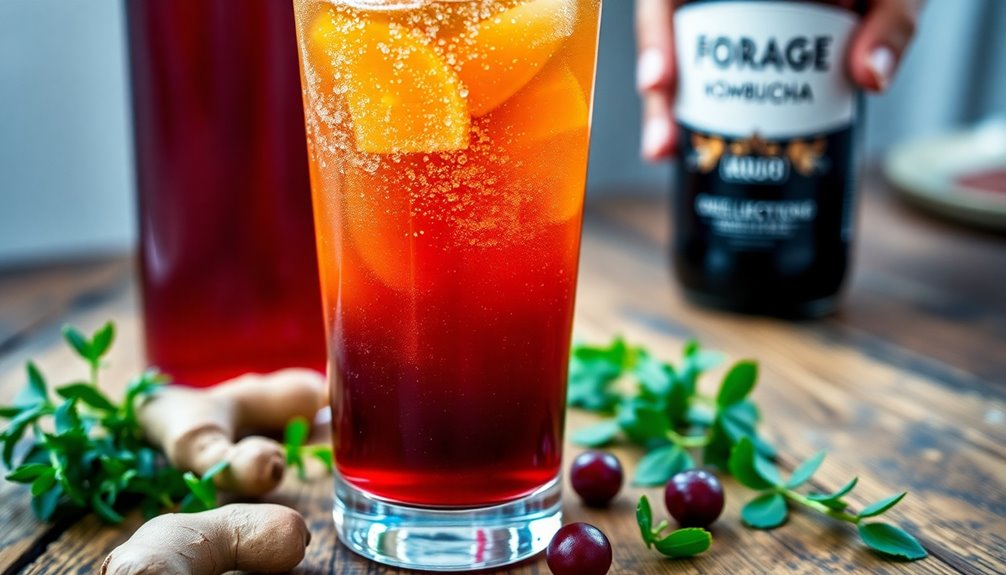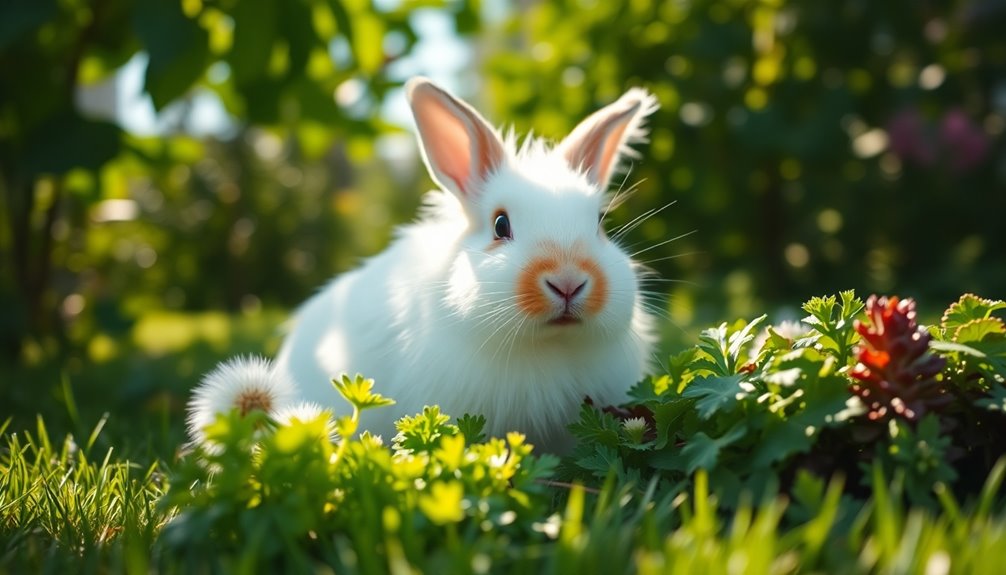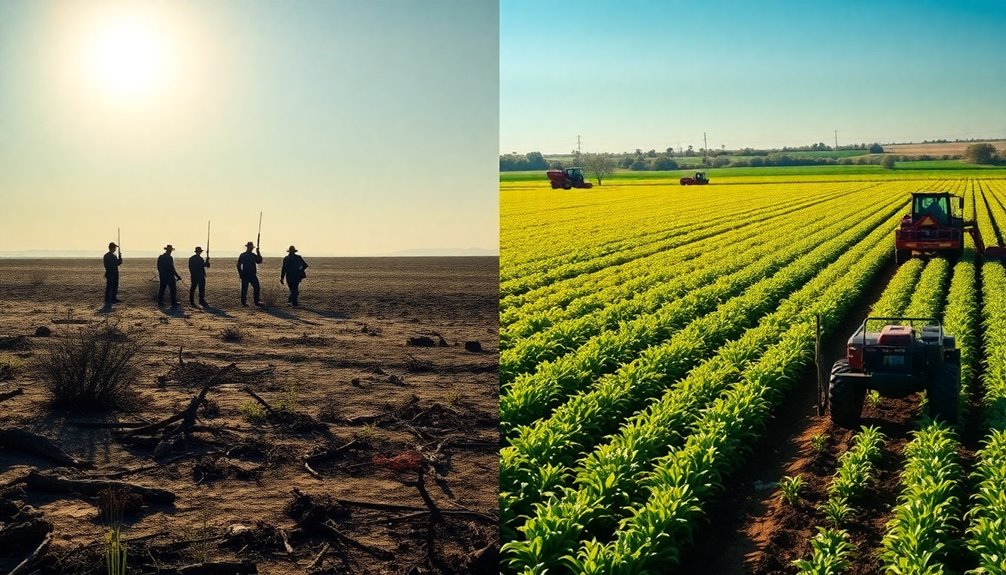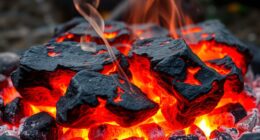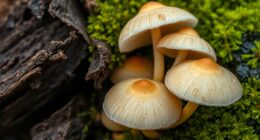Picture yourself strolling through a sun-drenched forest, enveloped in the aroma of trees and soil. All of a sudden, you spot a hint of purple amidst the greenery. It turns out to be a lovely cluster of blackberries. You pluck a few and savor the delightful explosion of taste. This experience leaves you feeling profoundly linked to the natural world.
Foraging is all about exploring and finding wild foods. It connects you to the earth in a unique way. You might be looking for mushrooms, plants, or berries. This activity lets you discover nature’s treasures.
Before you start foraging, you need to keep a few things in mind. Foraging must be safe, respectful, and sustainable. Learn from those who know how to do it. There are online resources and people who can teach you. As you get to know the plants, foraging becomes a special part of your life. It makes your bond with nature stronger.
Whether you’re just starting or you’re an expert, let’s dive into the foraging world together. We’ll learn a simple trick that changes how you collect wild foods.
Key Takeaways:
- Foraging is a hobby that requires learning and practice.
- Learning in person from experienced foragers or taking classes can provide a holistic learning experience.
- There are also online resources and courses available for those who want to delve deeper into herbalism.
- By developing relationships with plants and exploring their flavors and uses, foraging can become a natural and intimate activity.
- Next, we’ll explore the importance of safety in foraging and the essential practices to ensure a safe foraging experience.
The Importance of Safety in Foraging
Foraging is an amazing way to connect with nature and find what the wild can offer. But, it’s key to be safe while doing it. While foraging, knowing the risks and how to forage safely is important for a good experience.
Knowing the plants you pick is a must for safety. You have to be sure about the plants you find. Learn about the plants in your area to avoid toxic ones.
Having a first aid kit is crucial too. You might get minor injuries or slip and fall. With a first aid kit, you can handle injuries right away. It’s smart to be ready for anything.
It’s also important to be aware of where you are when foraging. Keep an eye on the ground, the weather, and any risks around. This care helps avoid problems and makes for a better foraging trip.
Avoid foraging in places that might be polluted. Don’t forage near factories, busy areas, or where pesticides could be. Looking for clean areas means you avoid harmful stuff in your finds.
Also, foraging in a way that respects the environment is key. Make sure the plants can keep growing for others to find. Only take what you need and let the plants grow back. This way, foraging can last for years.
By sticking to these tips, foraging can be safe and fun. It’s not just about picking wild foods. It’s also about respecting the environment and staying safe. Enjoy the adventure of finding what nature has to offer!
The Importance of Respect in Foraging
Foraging requires a mindset of respect for the land and its gifts. It’s important to appreciate what nature offers us. Following ethical foraging practices ensures that wild foods remain for future generations. It also helps us live in harmony with our environment.
Understanding who owns the land you forage on is key. Always get permission before exploring private land. This shows you respect other people’s property and rights.
Responsible Foraging
It’s crucial to follow rules when foraging. Don’t forage in National Parks or protected areas where it’s banned. These rules protect ecosystems and prevent the over-picking of wildplants.
Respecting the land means leaving it as you find it or better. Pick up any trash you see. Also, fill in holes you might make. These actions keep the environment clean and untouched by humans.
Using everything you collect is part of respectful foraging. Wasting what you pick shows disrespect for the plants. Try to use every part of the plants, mushrooms, or berries you gather. You can cook, dry, or share your harvest with others.
Leading by Example
Practicing ethical foraging can inspire others. By showing care for the land, you positively impact the environment. You encourage a community of thoughtful foragers. Together, we can keep nature’s balance.
Foraging is more than just finding food. It’s about connecting with the land and cherishing its wealth. By respecting the land and using our harvest wisely, we support the ongoing tradition of foraging. We ensure its survival for future generations.
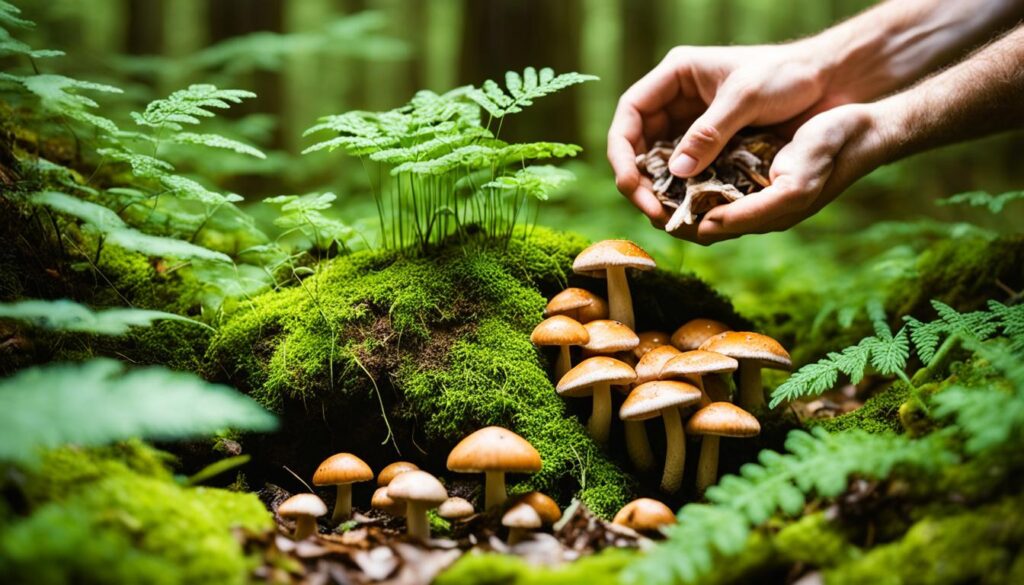
The Importance of Sustainability in Foraging
When it comes to foraging, sustainability is key. It’s about making sure wild plants and ecosystems last a long time. By foraging smart and caring for the environment, we can both enjoy nature and protect it.
Harvesting Responsibly
Responsible foraging means only taking a little, never more than 1/4 of a plant. This lets the plant keep growing. By doing this, we ensure plants and the ecosystem stay healthy for future use.
It’s important to know how plants grow and reproduce for sustainable foraging. Plants grow back at different rates. Knowing this helps us decide the best time to forage.
Preserving Critically Over-Harvested Plants
Some plants are in danger because they’re taken too often. Others are rare and need protection. It’s vital not to take these plants to save them from disappearing.
Instead, we should harvest plants that are common or invasive. These plants are okay to take. This way, we help the environment and still enjoy what nature offers.
Leaving Fruits and Berries for Others
When picking fruits and berries, always leave some behind. Other people and animals depend on them too. This practice keeps food for everyone and helps wildlife thrive.

Benefits of Sustainable Foraging
Sustainable foraging brings many good things. It helps plant life, keeps ecosystems healthy, and connects us closer to nature. By choosing to forage wisely, we help preserve the earth for all.
| Benefits of Sustainable Foraging |
|---|
| Promotes biodiversity conservation |
| Preserves natural resources |
| Fosters a deeper connection with nature |
| Supports the well-being of wildlife |
| Contributes to overall ecosystem health |
By foraging responsibly, we keep nature’s bounty for the future. Each choice we make is important. Through careful harvesting, we help balance humans with the natural world.
Learning in Person: Taking Classes and Studying with Experienced Foragers
There’s no better way to learn foraging than in person. Classes or training with experts offer a learning experience you can’t find online. Many local herbalists, universities, and organizations provide courses for all levels.
Seeing plants in their natural settings deepens your understanding of them. It allows you to use all senses, like smell, for identifying plants. This method boosts your knowledge and confidence in picking edible plants safely.
Studying with expert foragers brings many benefits. They share knowledge and insights from years of experience. Their classes provide hands-on learning which is very valuable. You learn not just about plants but also foraging methods, harvesting, and how to be sustainable.
Meeting others who love foraging is another perk of in-person learning. It’s a chance to share knowledge and make new friends. Joining local foraging groups is a great way to find mentors and connect with fellow enthusiasts.
| Benefits of Learning in Person | Online Learning vs. In-Person Learning |
|---|---|
| Hands-on experience | Access to practical insights from experienced foragers |
| Opportunity to develop all senses for plant identification | Ability to create a community of like-minded individuals |
| Access to local resources and experts | Immediate feedback and guidance from instructors |
Whether classes or personal mentoring suit you, in-person learning is key to improving foraging skills. Consider signing up for a class or workshop. Dive into the world of wild foods, meet expert foragers, and start a fulfilling journey.
Teaching Yourself: Pick a Plant and Dive Deep
Picking a specific plant to study closely is a great way to learn about foraging. By focusing on one plant, you get to know everything about it. This includes its looks and how you can use it.
Self-learning foraging is a journey of discovery. You start by choosing a plant. Then, you learn all about it on your own. Here’s how to begin your exploration:
Step 1: Identify the Plant
First, pick the plant you’re interested in. Look at its leaves, flowers, and how its stem feels. Use books, websites, or apps to make sure you’ve got the right plant.
Step 2: Understand Growth Habits
Find out where your plant likes to grow and how it behaves through the seasons. This means learning about the kind of soil it needs and the weather it likes best. This info helps you find the plant and know when it’s ready to pick.
Step 3: Know Edible Parts and Processing Methods
Learn which parts of the plant you can eat and the best way to prepare them. Different plants have different parts that are good to eat. It’s important to know how to cook or dry them to be safe from toxins.
Step 4: Be Aware of Look-Alikes and Poisonous Plants
It’s important to know about plants that look similar to the one you’re studying, especially if they’re poisonous. Being able to tell the difference keeps you safe. Look closely at each plant’s unique features and double-check your facts with trustworthy sources.

Let’s say you decide to learn about the wild strawberry (Fragaria virginiana). You’d notice its three-leaf pattern, white flowers, and tiny red berries. You’d figure out it likes soil that drains well and a bit of shade. You’ll learn that its leaves, flowers, and fruits are all edible. And, you’d watch out for plants that look similar, like the mock strawberry, which you cannot eat.
Studying one plant deeply teaches you a lot. You learn what makes it special, how to use it, and what to avoid. This approach makes you better at finding and using wild plants safely and creatively.
Recommended Resources for Foraging
Foraging is a rewarding activity that can enrich your knowledge and skills. Whether you’re starting out or already experienced, there are lots of helpful resources available. These can help you learn about wild plants and grow your foraging skills. You can find valuable information in local plant guidebooks and online platforms.
Local Plant Guidebooks
Having local guidebooks is crucial for foragers. They give you key details on the plants in your area. This helps you identify and gather wild foods safely and sustainably. These books often have photos, descriptions, and tips for foraging the right way.
“Pacific Northwest Foraging” by Douglas Deur is a top choice for many. It covers edible plants in the Pacific Northwest. With its detailed plant descriptions and photos, it’s a great resource for those in that region.
Online Herbalism Courses
If online learning suits you, check out herbalism courses available on the web. The Herbal Academy and The Chestnut School of Herbal Medicine offer courses for all levels. They cover plant ID, making herbal medicine, and the ethics of foraging, all from your home.
Foraging Apps
In our digital world, foraging apps are a big help. “PictureThis” is one such app. Just snap a plant photo, and AI helps identify it. It tells you the plant’s names, habitat, and uses. It’s perfect for foraging on the fly and getting fast, reliable info.
Foraging Communities and Forums
Joining online foraging groups is great for connecting with others. Reddit and Facebook have groups for foragers to share, ask, and learn. These communities are perfect for finding out about foraging, exchanging tips, and discovering local events.

Book Recommendations
Besides local guidebooks, other books widen your foraging know-how. “The Forager’s Harvest” by Samuel Thayer is one such book. It’s full of info on identifying, harvesting, and using wild plants in North America. It’s essential for foragers at any skill level.
Experienced Foragers and Mentors
Learning from experienced foragers is priceless. They can offer deep insights and tips on foraging. Try connecting with local herbalists, or join workshops and groups. Experienced foragers can mentor you, helping your foraging journey.
Using these resources can boost your understanding of wild plants and foraging skills. Remember, safety and sustainability are key. Keep learning and exploring the amazing world of wild foods as you forage.
The Journey of Learning and Exploring Plants
Learning about plants means growing close to them and finding out about their flavors and uses. It begins when you notice the plants near you and want to learn more. Whether you find them on a walk or see them in your yard, each plant has its own tale.
To know them well, study how they grow, if you can eat them, and their benefits for cooking and health. This understanding lets you dive into foraging with confidence. You’ll discover new tastes and exciting possibilities.
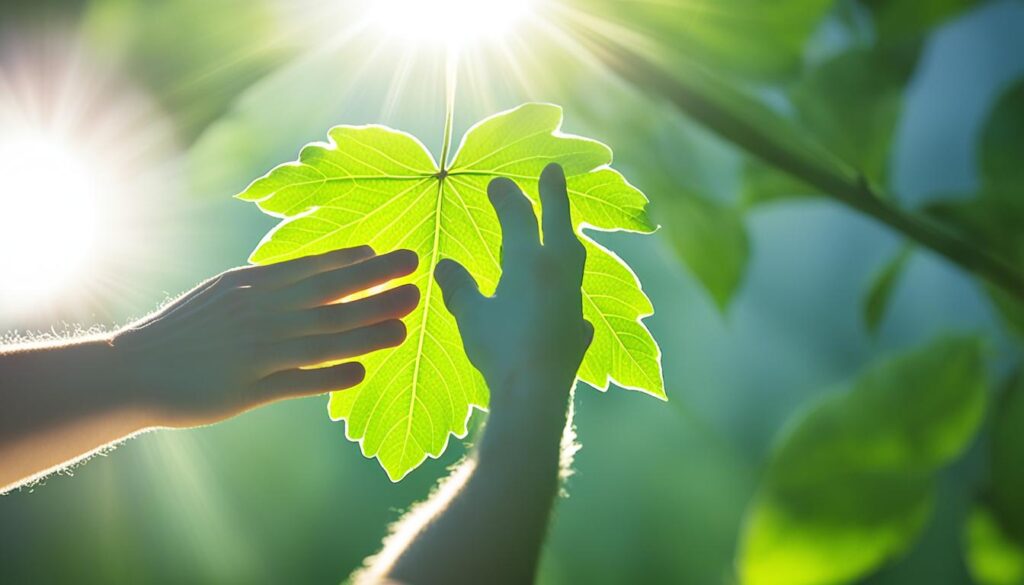
After finding a plant in the wild, try using it in your meals. Compare its taste to foods you know to understand its flavor. For instance, wild berries can bring sweetness to desserts and wild greens can add an earthy taste to salads and dishes.
You’ll be amazed at how a simple handful of wild plants can transform your cooking and take your culinary creations to a whole new level.
Exploring flavors and uses is a never-ending journey. It connects you to many plants around you. The more you learn, the better you get at mixing flavors and inventing recipes.
Connecting with Nature Through Culinary Exploration
Tasting and using wild plants not only broadens your cooking skills but also brings you closer to nature. Foraging makes you part of the natural world. This bond helps you value what the earth gives us.
As you get deeper into foraging, you’ll naturally understand plants better. You’ll know where they grow best, which ones are good for dishes, and when they taste the best. This instinct makes foraging more fun and helps you blend with nature smoothly.
Exploring Flavors and Uses of Wild Plants
| Plant | Flavor Profile | Culinary Uses |
|---|---|---|
| Dandelion | Bitter, slightly nutty | Salads, sautés, teas |
| Nettle | Grassy, earthy | Soups, pestos, teas |
| Ramp | Garlicky, onion-like | Pestos, pickles, omelettes |
| Mugwort | Herbal, slightly bitter | Baked goods, herbal infusions |
These examples show just a small part of the huge variety of flavors and uses that wild plants have. Each new find makes your cooking better and deepens your love for nature.
Overcoming Intimidation and Starting Small
A lot of folks feel overwhelmed by foraging due to a lack of confidence in knowing plants. It’s natural to feel unsure when you start a new hobby. But, with the right mindset, you can get past this fear. Begin with small steps and learn about easy-to-spot plants. This way, you gradually build your know-how and experience.
Starting with plants that are easy to recognize, like dandelions or clover, helps you lay a strong base in spotting different plants. These familiar plants are easy to spot and are found everywhere, making them great for beginners.
Beginning with simpler plants, you slowly grow your confidence and widen your foraging skills. As you get better at finding and collecting these plants, you’ll develop the skills needed for more advanced foraging. It’s like making a staircase, one step at a time.
Remember, foraging is a lifelong journey of learning, and it’s totally okay to start with small steps. Each plant you correctly identify and collect builds your confidence and pushes you to discover more.
Building Confidence and Expanding Horizons
When you feel good about basic plant spotting, you can begin to look for new plant types. Here are a few ways to grow your confidence:
- Utilize field guides and online resources: Buy trusted field guides for your area. These guides offer detailed photos, descriptions, and key facts on plants you encounter. Also, trustworthy websites and forums can boost your knowledge.
- Join a local foraging group: Connecting with those who forage in your area can offer great tips and support. Often, these groups arrange walks. Here, you can learn from those with more experience and understand safe foraging better.
- Experiment in the kitchen: After collecting some known plants, try them out in your cooking. Mix them into your meals to learn about their tastes and how they can be used. This hands-on approach helps you get to know the plants better.
Remember, every adventure begins with a single step. Don’t let fear stop you from enjoying foraging’s pleasures. Start with what’s simple, build up your knowledge, and slowly improve your confidence. With time and practice, you’ll grow into an adept forager, embracing nature’s gifts with assurance and joy.
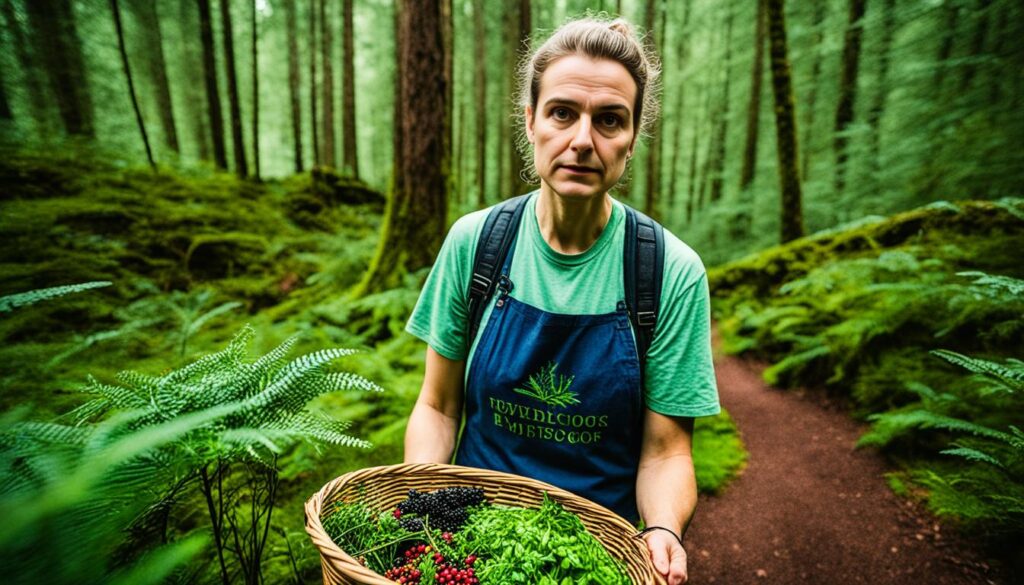
The Rule of Foraging: Safety First
When you’re foraging, one rule is key: always put safety first. Never eat anything unless you’re certain it’s safe. This highlights how crucial it is to know your plants and which ones to avoid.
Being cautious is a must for every forager. If you’re not sure about a plant, don’t eat it. The risks of consuming something dangerous aren’t worth it.
For your safety, learn as much as you can before foraging. Get tips from experienced foragers or trustworthy sources. You can find plenty of good advice online, in books, or from local groups.
Safety knowledge is vital for a good foraging experience. It lets you explore with confidence. Knowing you’re making safe choices means you can really enjoy your time outside.
“Safety first! Remember: it’s always better to be safe than sorry when it comes to foraging.”
Whether you’re experienced or new to foraging, always make safety your main focus. Educate yourself, learn to identify plants correctly, and ask for help when needed. This way, you can enjoy nature’s gifts without worry.
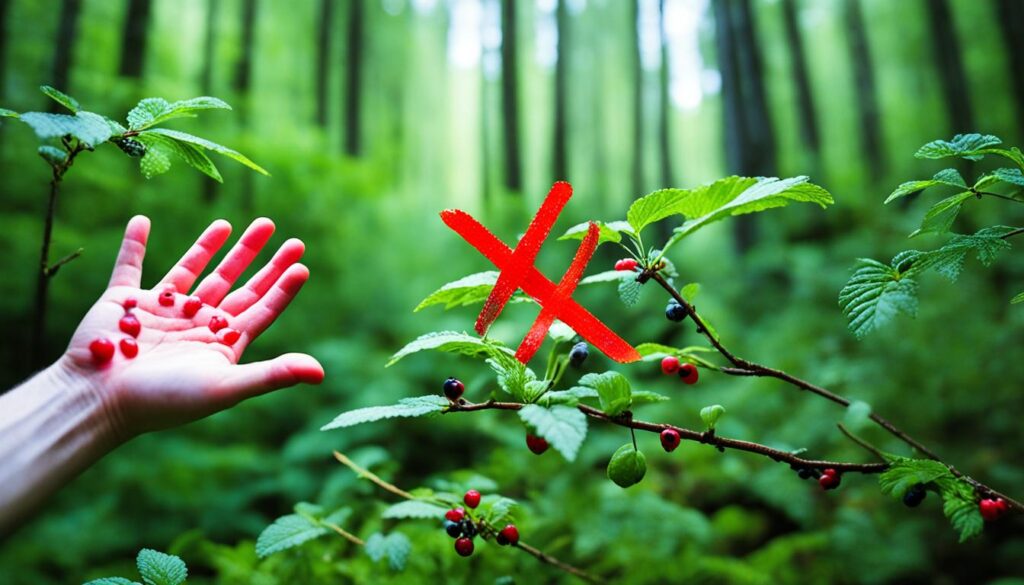
Seeking Guidance: Learning from Experienced Foragers
Learning from those who know foraging well is a great way to get better at it. When you seek advice from experts, you gain a lot of wisdom and practical skills. This can help you a great deal.
There are many ways to meet expert foragers:
Taking Classes and Workshops
Local universities and herbalists often have foraging workshops. At these classes, you’ll learn from people who really know their stuff. You’ll get to practice identifying plants, learn how to gather them, and find out their uses.
Joining Local Foraging Groups
Joining local groups lets you meet others who love foraging. Websites like MeetUp.com and findaforager.com can help you find these groups. You get to forage together and learn from those who have a lot of experience.
Online Platforms and Resources
Online, you can also find help from expert foragers. Websites like YouTube have channels just for foraging advice. Also, forums and social media groups are good places to meet knowledgeable foragers.
It’s key to show respect and thanks when learning from these experts. They often share what they know freely. But remember, their know-how and time are valuable.
Now, let’s hear from foragers who’ve learned from the best:
“Getting advice from the pros has made a big difference in my foraging. Thanks to their help, I can now identify and collect wild foods safely. Walking in the forest and recognizing edible plants feels great. I’m grateful to those who taught me so much.” – Jane Andrews
“Being part of a foraging group has broadened my knowledge. The seasoned foragers are always ready to share tips. Learning in the field with others makes foraging fun and fulfilling.” – Mark Thompson
Benefits of Learning from Experienced Foragers
| Benefits | Description |
|---|---|
| Hands-on Learning | Learning practical skills through direct experience in classes and workshops. |
| Networking | Making connections in local foraging communities and finding people with similar interests. |
| Access to Wisdom | Getting insights from the collected wisdom and experiences of expert foragers. |
| Community | Joining a group that shares a passion for foraging and wild foods. |
| Confidence Building | Becoming more confident by learning directly from mentors and experienced foragers. |
Identifying Edible Plants and Berries
Before heading out to forage, learning which plants and berries you can eat is key. It’s good to start by knowing the different kinds of berries and edible plants. This knowledge marks the beginning of your foraging adventures.
You can learn a lot from local plant classes, field guides, and online info. They offer great tips and info on recognizing safe, edible plants. These sources provide detailed pictures and traits to spot the right species.
Getting foraging books or guides with clear photos helps you ID plants and berries better. With these, you can match live plants to book images. This boosts your plant ID skills.
Knowing which plants and berries you can eat changes how you see the world. It unlocks new tastes, nutrients, and ways to find food that’s just waiting to be discovered.
As you learn more about plants, you’ll get good at spotting what’s safe to eat. Practice makes perfect. With time, you’ll be able to tell which plants are edible.
Local Plant Identification Classes and Field Guides
Local classes on plant ID can be found in many places. They’re often run by skilled foragers or herbal experts. These classes let you get to know plants up close.
Field guides geared toward your area are also useful. They should cover where plants grow, their unique features, and which ones to avoid.
Always be certain a plant or berry is safe before eating it. If you’re not sure, ask someone experienced or check reliable sources.
Online Resources for Plant Identification
The web has lots of info for identifying edible plants and berries. There are many websites and apps focused on plant ID. They offer large databases, photos, and forums to get help from seasoned foragers.
Make sure to check multiple trusted sites to confirm plant details. Online ID tools are handy for unknown plants you find while foraging.
Learning to ID plants accurately takes time and careful watching. Keep learning and checking reliable guides to know the edible plants and berries out there.

Avoiding Poisonous Plants and Berries
Foraging requires knowledge of both safe and dangerous plants and berries. It’s as important to recognize poisonous plants as it is to identify the edible ones. By learning key characteristics, you can steer clear of toxic plants. Being cautious and informed is essential for a safe foraging experience.
Some features can signal a plant might be poisonous. These include milky sap, fine hairs, umbrella-shaped flowers, or waxy leaves. If unsure about a plant, it’s best to avoid it.
Before foraging, do your homework to avoid poisonous plants. Use trusted online resources, field guides, and take courses on plant identification. Joining local foraging groups and talking to experienced foragers can also help. They offer valuable tips on avoiding toxic plants.
Foraging can be fun and rewarding, but safety first. Only eat plants, berries, or mushrooms when you’re 100% sure they’re safe. If in doubt, don’t eat it. Your safety should always be the most important thing when foraging.

Key Characteristics of Poisonous Plants:
- Milky sap: Some poisonous plants produce milky sap when broken. This sap can irritate your skin or cause harm.
- Fine hairs: Toxic plants may have fine or fuzzy hairs. It’s best to not touch or eat these plants.
- Umbrella-shaped flower clusters: Avoid plants with umbrella-shaped flowers, like the deadly poisonous water hemlock. They can be very toxic.
- Waxy leaves: A plant with shiny or waxy leaves might be poisonous. Be careful around these kinds of plants.
Always make sure you know a plant’s identity before eating it. If you’re not sure, check with reliable sources or experienced foragers. Your safety comes first!
Conclusion
Foraging is a lovely way to bond with nature and what you eat. It lets you find food while enjoying the outdoors. You get to learn about plants and berries. This journey is full of fun and knowledge.
Foraging makes you feel good about yourself. It helps you eat local and appreciate nature more. With the right knowledge, you eat safely from the land. This way of living is good for you and the planet.
It’s exciting to start foraging. You can take a class or get a guidebook and learn so much. Whether new or skilled, there’s always more to discover. Let nature be your supermarket. It’s full of surprises and healthy choices.




